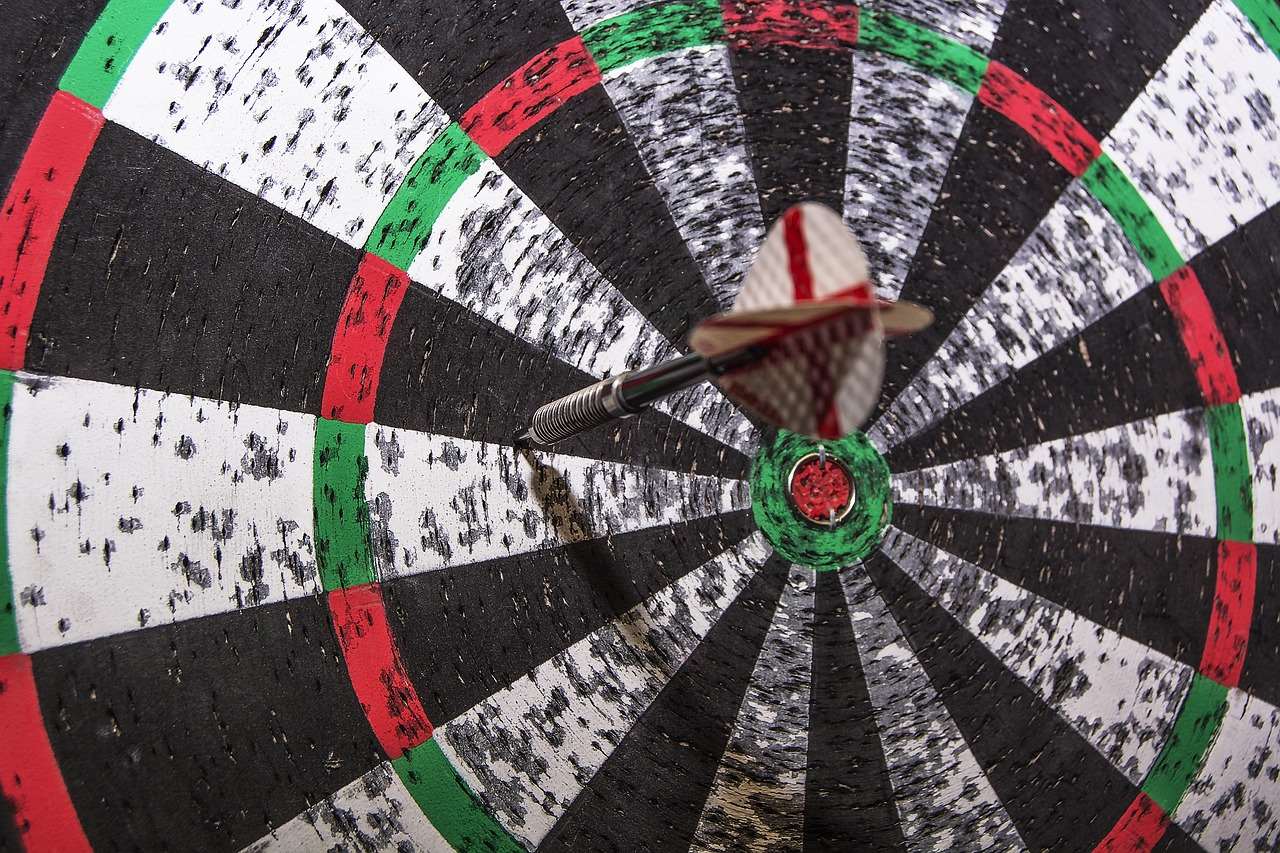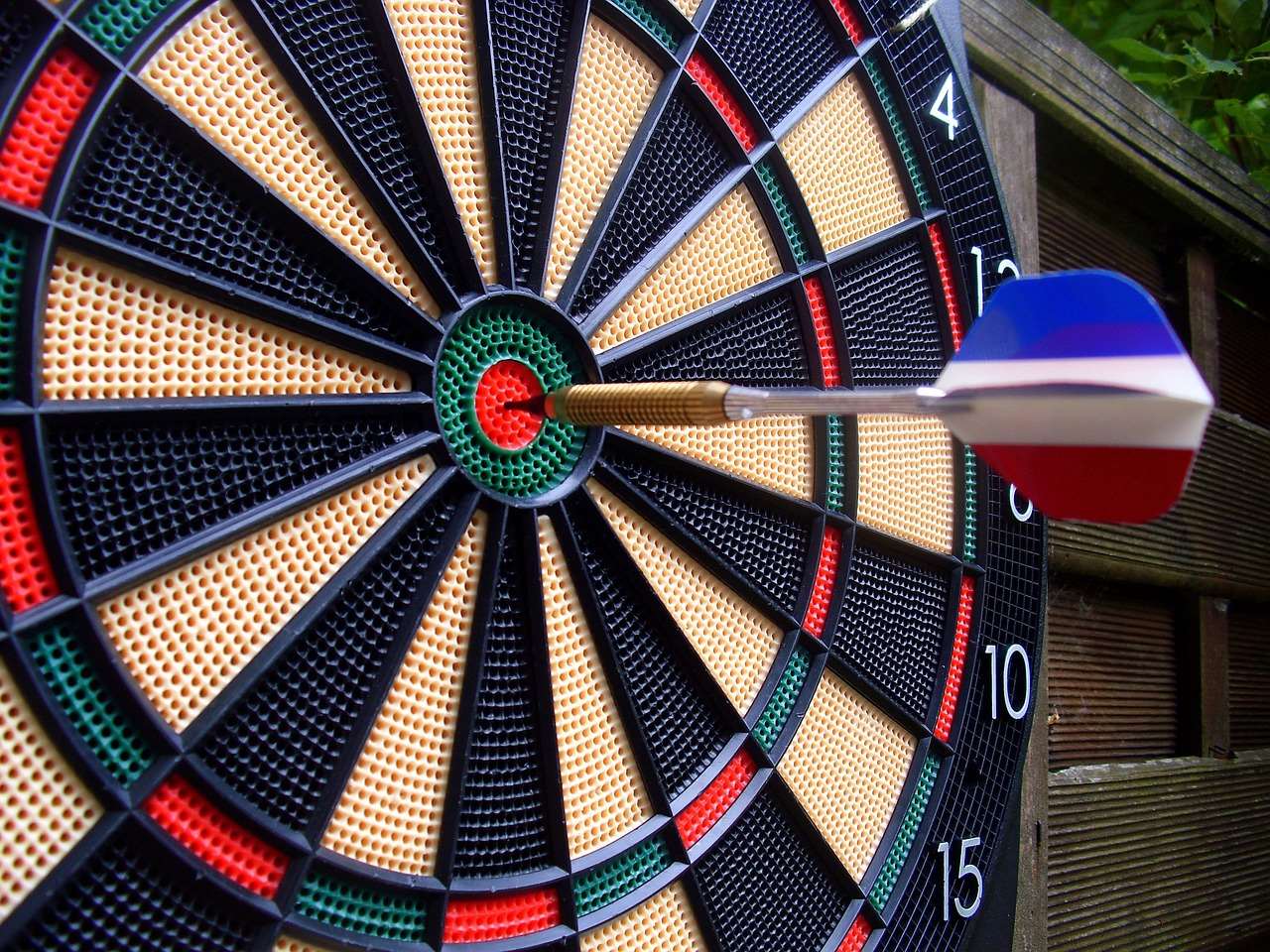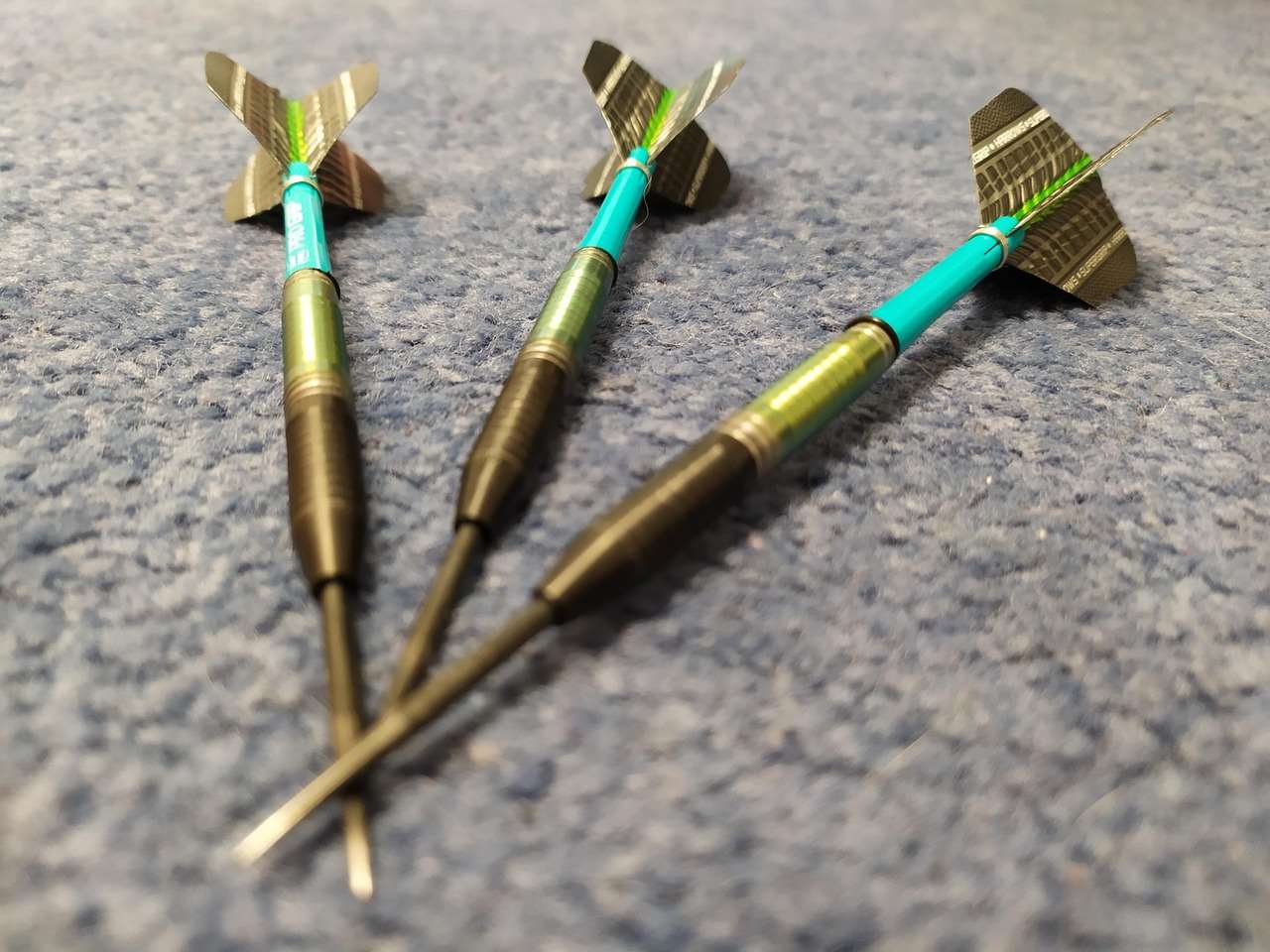The core of any winning Cricket darts strategy: closing the bullseye early vs late comes down to understanding when to maximize scoring potential versus playing defensively. This article will break down the pros and cons of each approach, helping you determine the optimal strategy for your skill level and opponent.
⚠️ Still Using Pen & Paper (Of een schoolbord)?! ⚠️
Stap in de toekomst! De Dart Teller -app behandelt alle scoren, stelt kassa voor, en volgt uw statistieken automatisch. It's easier than you think!
Probeer de Smart Dart Teller -app gratis!Klaar voor een upgrade? Klik hierboven!
Understanding Cricket Darts Strategy: Closing the Bullseye Early vs Late
In Cricket darts, a player aims to close out specific numbers (20, 19, 18, 17, 16, 15, and the bullseye) by hitting them three times before their opponent. A critical decision point revolves around when to target the bullseye – early in the game, or later as a closing strategy. The optimal approach depends on several factors including your dart throwing accuracy, your opponent’s skill, and the overall game situation. The debate about closing the bull early vs late is at the heart of effective Cricket gameplay.

The Case for Closing the Bullseye Early
Choosing to close the bullseye early can offer a significant advantage. Here’s why:
- Early Pressure: Immediately putting pressure on your opponent can force them into making mistakes. Seeing the bullseye closed early may cause them to rush their shots or change their strategy, potentially to their detriment.
- Points Advantage: If you’re a consistent scorer, closing the bullseye early allows you to rack up points while your opponent is still trying to close out other numbers.
- Strategic Flexibility: Having the bullseye closed gives you more flexibility in your shot selection. You can focus on closing out other numbers and scoring points without needing to worry about the bullseye being an immediate threat.
- Psychologische voorsprong: Some players find an early lead motivating. Closing the bullseye early can give you a psychological boost, increasing your confidence and focus.
Echter, there are also downsides to consider. An early focus on the bullseye could leave you vulnerable in other areas, particularly if your opponent is strong on the 20s or 19s. Let’s delve deeper into the other approach.
The Case for Closing the Bullseye Late
Sometimes, delaying closing the bullseye until later in the game is a smarter tactic. This strategy can be particularly effective against certain opponents or in specific game situations.
- Control of the Board: Focusing on closing out the numbers 20, 19, 18, 17, 16, En 15 first gives you greater control over the board. You dictate the pace of the game and force your opponent to react to your shots.
- Tactical Flexibility: Closing the bullseye late allows you to use it as a finishing move. If you’re ahead on points and your opponent is struggling to close out numbers, closing the bullseye can seal the victory.
- Risk Mitigation: The bullseye is arguably the most difficult target on the board. By delaying closing it, you minimize the risk of missing and giving your opponent an opportunity to gain momentum.
- Opponent Deception: Delaying closing the bullseye can lull your opponent into a false sense of security, particularly if they are focused on their own scoring. Dan, closing it at a strategic moment can catch them off guard.
It’s essential to consider when a strategic shift in play can make the difference between a win and a loss. You might also be interested in Basic Darts Fundamentals for Beginners.
Factors Influencing Your Bullseye Strategy
Several factors should influence your decision on whether to close the bullseye early or late:

Your Skill Level and Accuracy
The more accurate you are, the more viable closing the bullseye early becomes. If you can consistently hit the bullseye, there’s little reason to delay closing it. Echter, if your accuracy is inconsistent, it might be better to focus on easier targets first and save the bullseye for when you need it most. Practice is key to improving your **bullseye accuracy** and overall dart throwing technique.
Your Opponent’s Skill Level and Strengths
Consider your opponent’s strengths and weaknesses. If they are a strong scorer on the 20s and 19s, closing the bullseye early might be a good way to disrupt their game. If they struggle with the bullseye, saving it for a later stage could give you a tactical advantage. Pay attention to your opponent’s tendencies to gain a better understanding of the optimal strategy.
The Game Situation
The current score, the numbers that are open, and the number of darts remaining all play a role in deciding when to target the bullseye. If you’re ahead on points and have several numbers closed, closing the bullseye can secure the win. If you’re behind and need to catch up quickly, taking the risk of closing the bullseye early might be necessary.
Risk Tolerance
Uiteindelijk, the decision of when to close the bullseye comes down to your risk tolerance. Closing it early is a more aggressive strategy with potentially higher rewards, but also higher risks. Closing it late is a more conservative strategy with lower risks, but also potentially lower rewards. Consider your personal style of play.
Developing a Flexible Cricket Darts Strategy
The best approach to Cricket darts strategy: closing the bullseye early vs late is to develop a flexible strategy that you can adapt based on the circumstances. This requires:
- Strong Fundamentals: Mastering the basic dart-throwing techniques is essential for any Cricket player. This includes proper grip, houding, and release.
- Board Awareness: Knowing which numbers are open and which are closed is crucial for making informed decisions.
- Scoring Proficiency: Being able to consistently score points is essential for putting pressure on your opponent.
- Mental Toughness: Cricket can be a mentally challenging game. Developing the ability to stay focused and calm under pressure is key to success.
A flexible approach allows you to react to changing game conditions and exploit your opponent’s weaknesses. You need to become very adaptable to make the best decisions throughout a game. Now let’s talk about the strategic value of the 20s.

The Importance of the 20s in Cricket Darts
While the bullseye is strategically important, the 20s often take center stage in Cricket. Many players prioritize closing the 20s early due to their high scoring potential. Hitting a triple 20 scores 60 points, allowing you to quickly build a lead if your opponent hasn’t closed the number. This aggressive scoring can force your opponent to play catch-up, making them more prone to errors. Mastering the 20s, along with 19s and 18s, is a crucial aspect of **Cricket darts proficiency**. If you are interested in adapting dart game rules, check out these fun dart game variations with modified rules.
Practice Drills for Bullseye Accuracy
To improve your accuracy on the bullseye, consider incorporating these practice drills into your training routine:
- De Bullseye -uitdaging: Set a goal of hitting the bullseye a certain number of times in a row. Start with a small number, such as three, and gradually increase the number as you improve.
- The Round-the-Clock Bullseye: Start at the 1 and work your way around the board, hitting the bullseye after each number. This drill helps to improve your consistency and accuracy.
- The Bullseye Countdown: Start with a high score, zoals 100, and subtract points each time you miss the bullseye. This drill helps to build mental toughness and focus.

Consistency is essential. Regular practice will lead to significant improvements in your **darts performance** and your ability to execute your chosen strategy effectively.
Advanced Cricket Darts Tactics
Beyond the basic strategy of Cricket darts strategy: closing the bullseye early vs late, there are more advanced tactics you can employ to gain an edge:
- Blocking: Intentionally closing out a number that your opponent is relying on to score points. This can disrupt their game and force them to change their strategy.
- Opening for Points: Leaving a number open so that you can score points on your next turn. This can be a risky strategy, but it can also pay off handsomely if you’re able to capitalize on the opportunity.
- Target Switching: Changing your target in mid-throw to adjust for wind or other factors. This requires a high level of skill and coordination.
Understanding these tactics can give you a significant advantage over less experienced players. It’s also worth exploring Adapting darts rules for small spaces: tips and tricks, as the environment can impact strategy.
The Psychology of Cricket Darts
Cricket is as much a mental game as it is a physical one. The ability to stay calm under pressure, maintain focus, and anticipate your opponent’s moves is crucial for success. Pay attention to your own emotional state and that of your opponent. Tilt your opponent’s mental game to your advantage by creating pressure. A skilled player can exploit their opponent’s emotions and capitalize on their mistakes. Here are also some tips on Hoe Darts eerlijker te maken met handicapregels.

Mastering the mental aspect of Cricket can give you the edge you need to win close matches and consistently perform at your best. Developing strategies on when to strategically attack or defend, especially concerning the bullseye, is critical.
Conclusie
Deciding on the best Cricket darts strategy: closing the bullseye early vs late is not a one-size-fits-all approach. It requires careful consideration of your skills, your opponent’s skills, and the current game situation. The key takeaway is flexibility – being able to adapt your strategy based on the circumstances. By mastering the fundamentals, developing strong board awareness, and honing your mental toughness, you can become a formidable Cricket player. Start experimenting with different strategies in your next game and refine your approach based on the results. Nu, go practice and perfect your bullseye strategy!
Hoi, Ik ben Dieter, En ik heb Dartcounter gemaakt (Dartcounterapp.com). Mijn motivatie was geen darts -expert - helemaal tegenovergestelde! Toen ik voor het eerst begon te spelen, Ik hield van het spel, maar vond het moeilijk en afleidend om nauwkeurige scores te houden en statistieken te volgen.
Ik dacht dat ik niet de enige kon zijn die hiermee worstelde. Dus, Ik besloot om een oplossing te bouwen: een eenvoudig te gebruiken applicatie die iedereen, Ongeacht hun ervaringsniveau, zou kunnen gebruiken om moeiteloos te scoren.
Mijn doel voor Dartcounter was eenvoudig: Laat de app de nummers afhandelen - het scoren, de gemiddelden, de statistieken, Zelfs checkout suggesties - zodat spelers puur kunnen richten op hun worp en genieten van het spel. Het begon als een manier om het probleem van mijn eigen beginners op te lossen, En ik ben heel blij dat het is uitgegroeid tot een nuttig hulpmiddel voor de bredere darts -community.